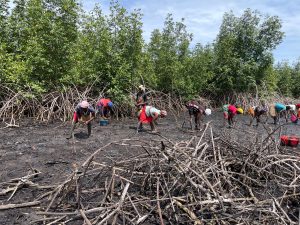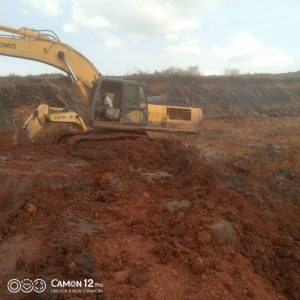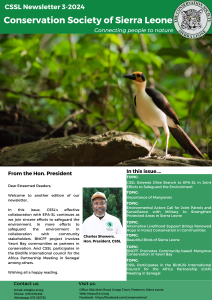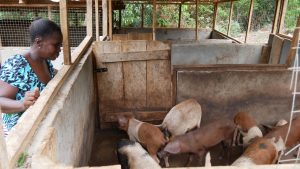
In recent years, scientists have cautioned against the unceasing vanishing of mangrove forests worldwide. The decline is reported at 1 – 2% per year with a total loss of around 35% disappearing in the last 20 years. Mangroves in Sierra Leone are amongst the worst degraded globally, but solutions are starting to root at both local and national levels.
Mangroves are important nature-based solutions to the climate change crisis. They store carbon four times more than traditional rainforests, serve as shoreline protection against floods and storms, prevent erosion, and maintain water quality and clarity. They are a hub for biodiversity, while providing various economic benefits to communities.
The Yawri Bay coastal scape incorporates three major creeks: Ribbi Creek, Bompeh Creek and Kagboro Creek and consists of marshes, mudflats, mangroves, and intertidal sand and mudflat at the mouth of the Kagboro Creek. In recent years, the mangrove ecosystems in Yawri Bay have faced significant degradation due to various anthropogenic activities, including mangrove harvesting, to meet the energy needs of coastal communities, salt production, charcoal burning, housing construction and domestic purposes, in particular for cooking and fish smoking. This has exacerbated the increased climatic effects such as erosion, temperature rise and heavy wind surge.
As a solution to reversing the level of degradation and maintain the integrity of the Yawri Bay ecosystem, Blue Natural Capital Financing Facility (BNCFF) provided funding support to the Conservation Society of Sierra Leone (CSSL) and Green Life West Africa to restore 50 hectares of mangroves in selected communities. The project kick-started earlier this year with community and stakeholder engagements, biodiversity and socio-economic assessment and alternative livelihood support interventions, which paved the smooth road to the restoration activities.
Between July and August, 2024, the project staff from CSSL and Green Life West Africa worked assiduously with communities and undertook what many described as very successful restoration activities in three (3) communities (Ribbimen, Morchail/Moyambe, Gbankoh). A total of 285,000 propagules were planted in 57 degraded sites in these communities.
A critical aspect of site restoration is monitoring and ensuring the growth of the seedlings. The clarity of the messages delivered during the community engagement phase that preceded the restoration enthused community members and made them commit themselves to ensuring the constant monitoring and protection of the newly planted propagules.
The Headman of Ribbimen, Alusine Koroma, called on his people to take full responsibility for monitoring the mangroves they have planted. “As a leader, I have pledged with all of you to desist from any attempt to destroy the mangroves we have planted. Our actions, as community members, have over the years contributed to the destruction of the mangroves which has been adversely affecting our lives. But I believe that with this project, the security of our lives and livelihood is very hopeful for the near future. As a commitment, I will do all my best as a leader to secure the protection of the mangroves we have planted”, Koroma assured.
“I am grateful today that our long-deteriorated ecosystem has been restored with mangroves. We will now have an ecosystem that will support fish population and other marine species in our marine ecosystem to flourish for our benefit. This activity is truly a testament that once we come together to support the growth and sustainability these mangroves, our lives will be protected from flooding, excessive wind storms and climate change impact in future”, Ibrahim Bangura, Headman-Morchail, expressed with high optimism.
Mangrove restoration is a way of reviving the ecosystem. The Project Manager – CSSL, Abdulai Dauda, maintained that the initiative can only be successful if communities are involved and fully participate in the process. “Collaboration with other organizations in the process is also vital to promote a successful restoration. More importantly, conscientising communities to enable them understand the benefits of mangroves, and incentivizing them are key driving vehicles towards attaining a successful restoration as this was practically evidenced in the entire process”, Dauda emphasised.



